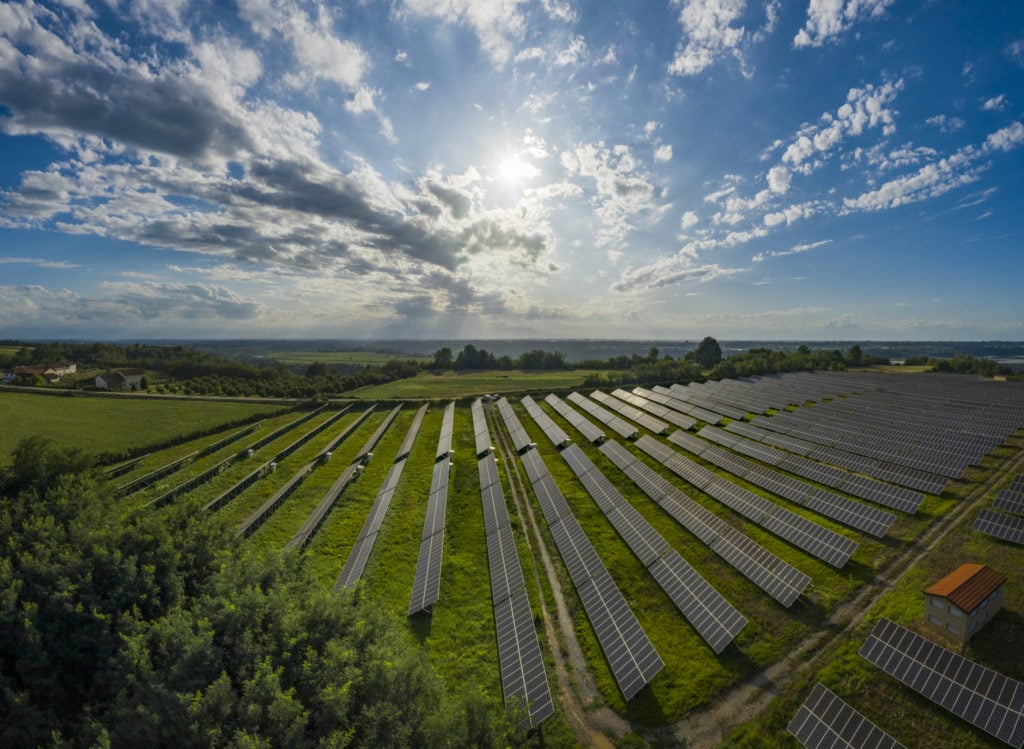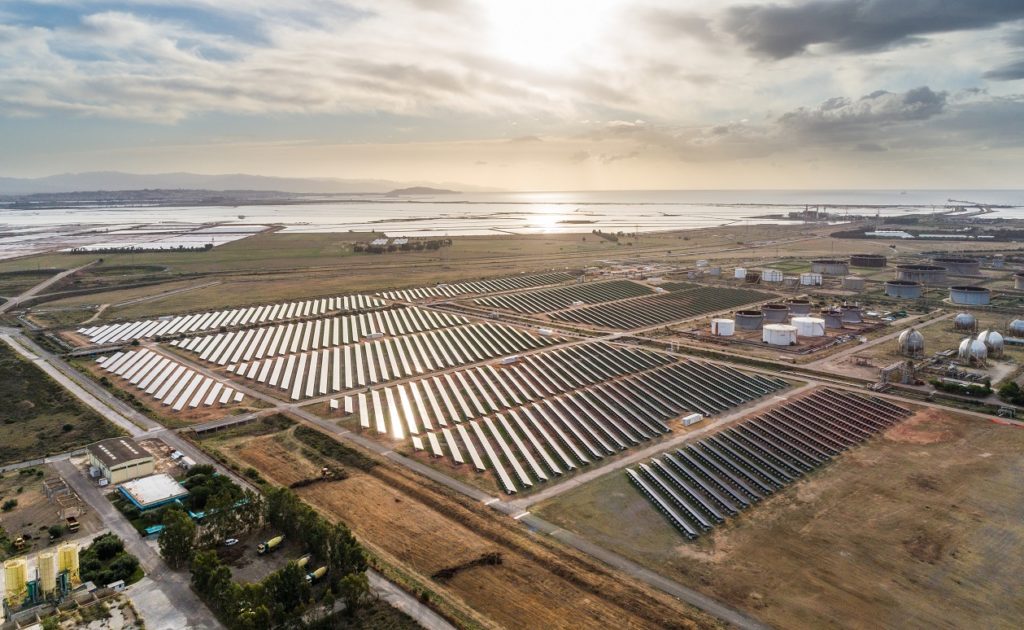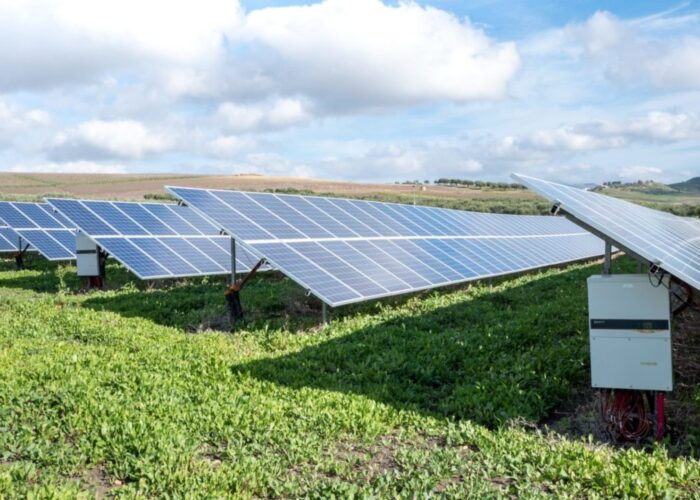
Italy’s solar sector is a market in flux, with moves by the government to ease development clashing with a clawback of solar profits hampering international investor confidence. Molly Lempriere takes a look at what the new market potential for Italy is and where does it go from here?
Italy was once amongst the leading PV markets in Europe, with early growth spurred by its high levels of irradiation and the launch of a number of government support mechanisms. But bureaucratic challenges and changes in policy support has led it to lag behind other European markets.
Unlock unlimited access for 12 whole months of distinctive global analysis
Photovoltaics International is now included.
- Regular insight and analysis of the industry’s biggest developments
- In-depth interviews with the industry’s leading figures
- Unlimited digital access to the PV Tech Power journal catalogue
- Unlimited digital access to the Photovoltaics International journal catalogue
- Access to more than 1,000 technical papers
- Discounts on Solar Media’s portfolio of events, in-person and virtual
As power prices have surged throughout Europe on the back of gas shortages and geopolitical tensions, focus is again turning to the fastest ways to grow the clean energy sector. Italy’s National Integrated Energy and Climate Plan (PNIEC) set out a target of 55% of its power generation coming from renewables by 2030, including a 52GW solar capacity target, up from 22GW currently.
To meet this goal the country needs to triple the amount of solar it rolls out annually, and must therefore tackle core challenges such as the country’s permitting process and land availability. But while positive steps have been made towards easing these, a recent move to clawback profits from operational solar power plants has risked deferring investment.
So what is the market potential of Italy, and does more need to be done to ensure the market is attractive?
Clawing back solar’s success
In January 2022, the Italian government announced a new law to limit the windfall profits of some Conto Energia feed-in tariff (FiT) backed solar power plants. Conto Energia was first launched in 2005 to support the rollout of renewable technologies by guaranteeing revenues for up to 20 years. The clawback forms part of article 16 of the Law Decree 04/2022, and is set to impact geothermal, hydro, photovoltaic and wind merchant power plants with a capacity above 20kW.
For solar, this could be as much as 13GW of generating projects according to research from energy trading company EGO Energy. From 1 February, “extra profits” from these plants will have to be paid back to the country’s energy management agency Gestore dei Servizi Energetici (GSE) as part of a €1.7 billion (US$1.9 billion) energy package designed to curb surging energy bills.
The move has been condemned by the country’s solar trade association, Italia Solare as it “inexplicably modifies previous agreements to which the operators have legitimately relied, a change even more unacceptable considering that there has been no consultation with the operators”, Paolo Rocco Viscontini, president of the association, wrote in a letter sent to Italian Prime Minister Mario Draghi in January.
Speaking to PV Tech Power, Viscontini highlighted that the criticism doesn’t stem from the move to secure economic support where possible within an energy crisis, but from the lack of consultation and inconsistency between the impact of government policies on renewables in comparison to fossil fuels.
“Fossil energies have been touched in a much different way more recently with a new decree, but this is really unfair because it’s very confused and seems a much lower level of intervention in terms of funds that are taken by the state from fossil fuels, a much lower percentage than for renewable where it is 100% of the extra price, whereas for the fossil companies it is 10% practically. With a system of calculation that is complicated and it seems that some companies will even avoid paying,” says Viscontini.
The clawback is designed to raise €1.5 billion, and will work together with other measures introduced by the government such as a levy on energy companies profits to help cushion the impact of surging prices. Currently the Conto Energia subsidy costs consumers €6 billion per year.
The threat to investor confidence
Whilst the clawback may be seen as a blow to solar projects developed under the Conto Energia scheme, whether the move impacts investor confidence in the Italian market remains to be seen.
Viscontini says this was a key concern, because if the state can decide when a company is earning too much and intervene, it creates “very strong uncertainty [in the] investment atmosphere”.
“At the same time, there is such a high interest and availability of capital and liquidity to invest in the sector, we still see a huge interest in investing in Italy. I expect that are the IRR targets will increase to absorb this risk. It’s a traditional, standard financial rule, the higher the risk, the higher will be the IRR expectation,” he says.
Given the strong market fundamentals and continued push to move away from gas and towards renewable energy boosting investment prospects, many developers remain undeterred by the move. This sentiment is echoed by Richard Braakenburg, head of the equity investments team at SUSI Partners, who said for his team, the long-term trends in the Italian market remained favourable.
“That’s also why we look at projects that aren’t subsidised, because they have to stand on their own two feet,” he adds. “So we’re obviously tracking this carefully, but we still believe the fundamentals are there, and we’re cracking on.”
Others in the solar energy sector in Italy flagged that this is a short term measure, minimising the overall impact. Michele Governatori, the energy lead at ECCO describes the measure as “old stuff already” and instead highlighted that with current prices, subsidies are not a problem.

The benefits of maintaining a stable investment environment are clear, but so too is the need for action from the government to manage the current energy crisis. Italian household electricity prices jumped 55% in the first quarter of 2022 despite the government providing €3.8 billion to cushion the blow, on the back of a 41.8% increase in gas prices.
“The government is trying to address and react to challenges never seen before. And what they are operating now is in actually through leverages that are within their control, for example taxation, and nobody ever said that taxes will never change,” says Aldo Beolchini, CFO of NextEnergy Capital.
“So this is why I am not in favour of the immediate opposition [to the clawback] that came up from some parts of the industry, where they are saying, ‘Oh, this is absolutely damaging the industry.’ And you see investors know, when they enter into markets that some regulations might change, tax regimes can always change, energy markets are dynamic. And in our age, they are even more dynamic, in the last couple of months they’ve been upset by exceptional events as well.”
Driving solar forward
Whilst the government is looking to utilise surging profits in the solar sector to boost the resilience of the market more broadly, it has also made moves to further support its expansion, most notably through its Simplification Decree. The Decreto Semplificazioni Bis (Act No. 108 of 29 July 2021) looks to ease the planning process allowing more solar PV projects to come online faster, tackling one of the most significant barriers in the sector.
The Simplification Decree forms part of the Italian Recovery Plan, and is expected to take advantage of €191 billion (US$227 billion) of EU funds. There are a number of tenets to it, including a new State Environmental Impact Assessment (EIA) procedure, impacting solar photovoltaic plants with a capacity greater than 10MW and a simplified authorisation procedure for power plants up to 20MW in industrial, production or commercial areas.
“We will measure the effectiveness of the Simplification Decree in the coming months,” said trade association Electricity Futura president Re Rebaudengo when it was released in 2021. “Our country risks continuing to have long authorisation times and high bureaucratic costs. We hope that our fears are not confirmed ”.
Additionally, the decree makes it possible for solar developers to apply for state incentives under Legislative Decree 28/2011 to construct ground-mounted projects on agricultural land. Along with planning permission, the availability of land is often seen as one of the key barriers to development in Italy, by opening up further agricultural land for PV developments, the government has recognised a potentially significant area of opportunity for the solar sector.
Across Europe, agriphotovoltaics (agriPV) is gaining increasing attention as countries look to balance clean energy targets and land scarcity. The advancement of the sector was one of eight key actions suggested by SolarPower Europe in March 2021, designed to help Europe accelerate solar deployment to reach a total capacity of 1TW by 2030 and reduce its reliance on Russian fossil fuel imports.
“The core question of what we do with agricultural land is still there”
While the overarching aims of the Simplification Decree, and more specifically the move to open up agricultural land for development, have been welcomed by the sector, there are a number of points that remain unclear.
“There’s always a bit of fine tuning clarification required,” says SUSI’s Braakenburg. “Those new regulations are probably working around at the edges. So we haven’t quite addressed the core of that question. Designating certain areas of land, like disused quarries and various other brownfield land as developable is helpful, but it just nibbles around at the edge. The core question of what we do with agricultural land is still there, I think.”
Italia Solare has called for additional details on the use of agriPV, in particular around the area of land that is used for PV and how this is defined
“These laws are still a little confused without a proper definition,” says Viscontini. “So, they are exposed to interpretations that is something that we don’t want, because for instance they say that both agriphotovoltaics or standard ground installed PV plants can have access to a fixed tariff for 20 years, even if this must be renovated.”
The opportunity within the agriPV space in Italy is clear, and already companies are looking to take advantage of it. NextEnergy Capital recently unveiled a project that includes seven kinds of crops, working collectively for the most efficient production of power and resources.
“We have created an innovative methodology of developing projects in conjunction with the farmers unions, so that they have actually identified, what were the typical crops they wanted to grow,” says NextEnergy Capital’s Beolchini.
“An example is some of the land was contaminated by previous industrial and landfill processes. So we devised a part of the site to be used to grow hemp, which is a type of crop you’re not going to eat. But it can be actually a fantastic replacement for plastic in insulation materials, but also has the advantage of filtering and cleaning the land over the years. So it’s a natural regenerating agent for a site.“
Beyond this Statkraft Italy recently signed a four-year research agreement with the Department of Agro-Environmental and Territorial Sciences at the University of Bari Aldo Moro in April 2022, to explore the potential of agriPV in Italy and beyond.
In addition to these moves by government to spur solar power development, the country’s grid operator Terna announced €10 billion of investment in March, with the intension of improving the country’s national transmission grid and building more cross-border interconnections, paving the way for easier access for renewables.
“Our capital expenditure… will allow us to integrate renewable sources and electrify consumption and to guarantee ever greater security and efficiency of supply, a system that is fit for purpose and improved quality of service, whilst cutting costs for consumers and businesses,” said Stefano Donnarumma, CEO of Terna, at the time.
How do investors see the market?
So has the flux in the Italian market hurt its investment prospects? Given the growing demand for clean energy it seems unlikely, especially given the strong economics of solar power meaning that beyond subsidised projects there is positive movement in the sector.
On the back of this, the power purchase agreement (PPA) market is seeing an exceptionally strong period, with Italy accounting for the second largest share of agreements in Europe at 27% according to LevelTen’s Energy Marketplace. It found that Italian P25 solar PPA prices have jumped by more than 23% year-on-year between 2021 and 2022, and now sit at €51.5 per MWh.
“It’s interesting, because you end up in a bit of a conundrum actually, do you want to sign a PPA now, a long-term PPA at prices that the corporates won’t necessarily want to do that at this level. And equally a lot of [power] producers would be well served by just being merchant at the moment,” says SUSI’s Braakenburg.
“a lot of [power] producers would be well served by just being merchant at the moment”
“So I think the PPA debate is probably in a little bit of a hiatus, simply whilst we wait for these volatile times to shake out a little bit. But I think that markets will still be there.”
In addition to growth in this space, there is also Contracts for Difference (CfD) auctions offering support for utility-scale solar. Italian energy agency the GSE awarded 710.2MW of solar capacity across 60 locations as part of the seventh round of the scheme. Companies including German developer Juwi, Italian developers ERG and Enel and Portuguese utility EDP won contracts for the development of solar projects under the scheme.
The combination of a push towards green energy, efforts to streamline the planning process and open up additional land, a strong PPA market and the CfD’s mean despite challenges in the sector, momentum is building. But as Italy looks to expand and decarbonise its energy sector, it is important that solar is centred as a key solution to both energy security and climate action, in order to continue to strengthen as a sector.
“I think we all need to be aware of the fact that renewable energy is an emerging industry, and we’re also facing a clash with the incumbent energy generators, the oil and gas majors,” says Beolchini.
“When it comes to redistributing the pain, I think it is important actually to remember that the operators in the renewable energy industry are the ones that are building the future energy system. And so it was important that these costs are located right, taking into account who’s part of the solution.”
While the Italian market is experiencing a level of flux, it seems unlikely that this will stop the growth of solar power, with the question just remaining as to whether it will be enough to meet 2030’s targets.
But, as Braakenburg says, “the arrows are all pointing in the right direction.”







